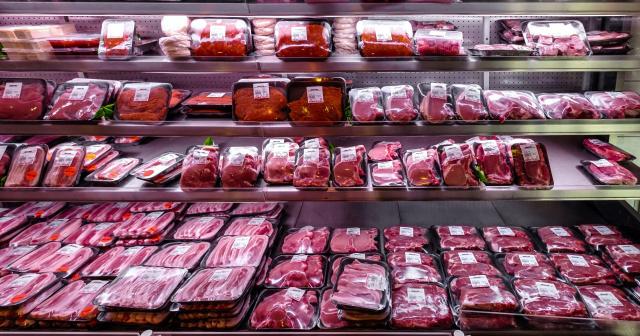Beef + Lamb New Zealand (B+LNZ) has received some enquiries from farmers about the high farm-gate returns UK farmers are achieving for lamb and concerns that New Zealand lamb is being sold at lower prices compared to British lamb in UK supermarkets.

It follows the recent decision by UK supermarket chain Morrisons to reverse its decision to exclusively supply British lamb and now also stock New Zealand lamb. It is worth noting that the ‘big four’ retailers have remained committed customers of N Z lamb, the remaining few such as Co-op and Waitrose remain 100% British.
We were disappointed by claims by the UK National Farmers’ Union that New Zealand lamb is produced to "potentially lower standards" and has high food miles, and we have strongly pushed back on these claims with: British media.
New Zealand’s standards are consistently considered as equivalent to the UK’s and independent work B+LNZ has commissioned has shown that New Zealand’s carbon footprint is the same or lower than lamb produced in the UK even when transport is included.
It is also important to understand that the factors driving farm-gate prices here in New Zealand are different from those in markets like the UK and Europe, where we compete with heavily subsidised domestic sectors.
A number of factors influence the price differential between New Zealand and British lamb.
What is driving UK farm gate prices?
- The peak of UK farm-gate prices for lambs usually occurs in late May/June, meaning the difference between the prices that British and New Zealand farmers receive tends to the most pronounced at this time of the year
- This year, the price differential is greater for a range of reasons at outlined below.
- In June 2023, the UK sheep flock was at its lowest level in over a decade, according to official UK figures.
- Due to adverse weather conditions, the UK’S Agriculture and Horticulture Development Board (AHDB), the levy board which represents farmers, growers and others in the supply chain, is also predicting a 10% shortfall in the number of lambs carried over from the old to new season this year, a fall of around 400,000 head
- UK lamb exports are rising to the EU and US
- These factors have increased competition for livestock among UK processors and has significantly driven up farm gate prices. Commentators have suggested that the high prices are unsustainable as UK processors are facing significant financial pressure as a result of the procurement competition.
What contributes to a difference in prices in the supermarket?
- Some British consumers prefer to "buy British” and are prepared to pay a premium;
- UK supermarkets often use New Zealand lamb as a loss leader to attract customers in-store to buy other products
- Our farmers are highly efficient thanks to the sector’s sustained investment in sheep genetics, commitment to improving farm systems, temperate climate, and generally larger-scale operations, which means we are able to sell at a competitive price to our counterparts. In the past, this is what has secured New Zealand a foothold in many of our export markets.
What has the greatest impact on New Zealand farm-gate prices?
- The farm-gate price that New Zealand farmers receive is heavily influenced by the prices exporters receive in China as this is by far New Zealand’s largest market. China takes nearly 50% of our lamb exports and more than 80% of our mutton
- Due to weak Chinese demand and high Australian exports, China prices have been much lower and this has had a major downward impact on NZ’s farm-gate prices;
- Less than 10% of New Zealand’s lamb exports go to the UK. While NZ processors have increased exports to the UK and been receiving better prices there than last year, this has not translated through to a significant increase in the New Zealand farm gate price
- New Zealand exports to the UK are predominantly leg cuts in response to customer and consumer preferences, which means it is not as simple as exporting more to the UK. Prices have also been under pressure from an increase in cheaper Australian lamb this year following the entry into force of their FTA.
The high farm-gate returns for UK lambs are not translating to improved profitability for UK processors and farmers.
Subsidies tend to increase costs of production within the farming system, as contractors and other service suppliers are able to charge higher prices than they would otherwise do. Input costs – such as feed – have also increased significantly in the last couple years.
There are also significant changes being made to the British subsidy systems following Brexit. Delays in implementing the new sustainable farming schemes to replace the EU’s Common Agricultural Policy (CAP) have left many farmers in England out of pocket.
While the cost-of-living crisis had previously dampened lamb consumption and growth in the UK, the market is improving as the country emerges from recession.
New Zealand exporters are observing growth in the lamb category and are well-placed to leverage this.